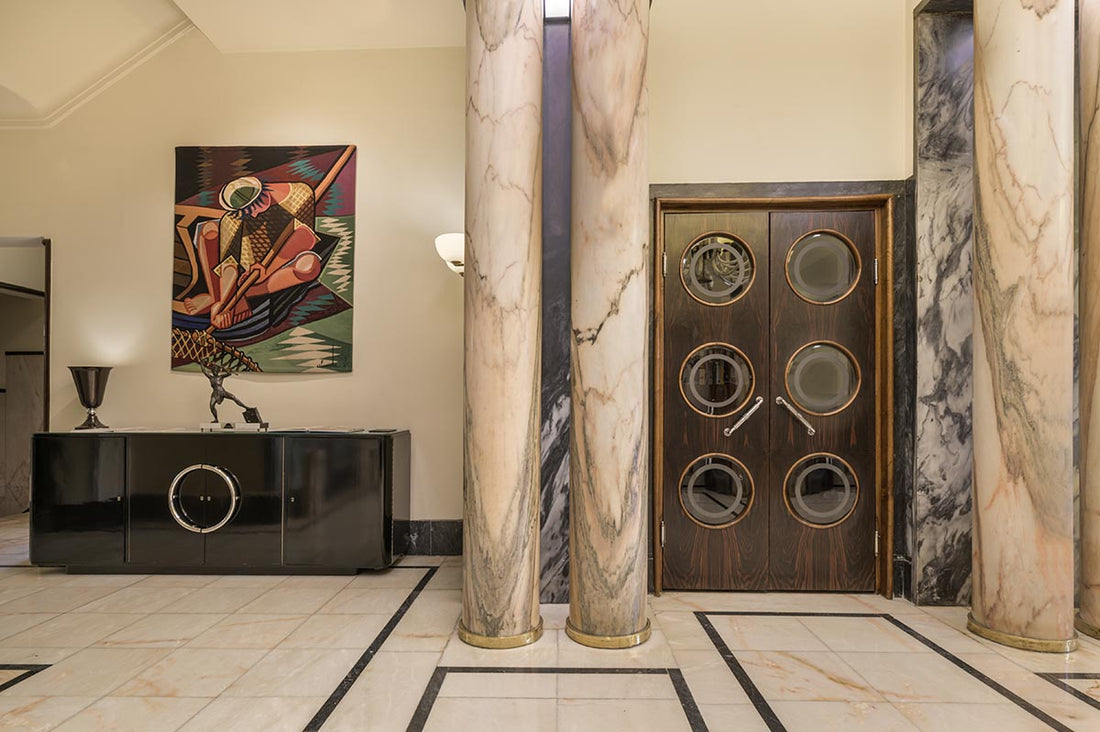
Elegance and Glamour: Exploring the Timeless Allure of Art Deco Interior Design
Art Deco, a design movement that flourished in the 1920s and 1930s, continues to captivate and inspire with its luxurious aesthetic and distinctive style. Characterized by geometric patterns, bold colors, and lavish materials, Art Deco interior design is a celebration of modernity, opulence, and artistic innovation. Let's journey into the world of Art Deco, where every space becomes a canvas for elegance and glamour, and discover the key elements, history, and enduring charm of this iconic design movement.
Origins and Influence
Art Deco emerged during a period of cultural and societal transformation following World War I. It was a response to the ornate and intricate designs of the preceding Art Nouveau movement, aiming to reflect the streamlined aesthetics of the modern age. The movement's name is derived from the "Exposition Internationale des Arts Décoratifs et Industriels Modernes," a Paris exhibition held in 1925 that showcased the movement's innovative design principles.
Key Elements of Art Deco Interior Design
-
Geometric Patterns: Geometric shapes, such as chevrons, zigzags, and sunbursts, are a hallmark of Art Deco design. These patterns are often incorporated into furniture, textiles, and decorative elements, infusing spaces with a sense of structure and order.
-
Bold Colors: Art Deco embraces a bold and vibrant color palette, including rich jewel tones like emerald green, sapphire blue, and ruby red. Contrasting color combinations create a visual impact that adds dynamism to interiors.
-
Lavish Materials: Art Deco interior design exudes luxury through the use of high-quality materials such as marble, exotic woods, metals like chrome and brass, and opulent fabrics like silk and velvet.
-
Symmetry and Balance: Symmetry and balance are integral to Art Deco design. Mirrored surfaces, stepped forms, and repetitive motifs contribute to a harmonious visual composition.
-
Streamlined Forms: Art Deco emphasizes clean and streamlined forms, often featuring sleek and angular furniture and architectural details. These streamlined elements reflect the influence of modern technology and industrial design.
-
Decorative Details: Despite its streamlined nature, Art Deco embraces intricate and decorative details. Ornamentation is often applied to furniture, lighting fixtures, and architectural features, infusing spaces with elegance and sophistication.
-
Sunburst Motifs: The sunburst motif, characterized by radiating lines and emanating sun-like patterns, is a recurring design element in Art Deco. It symbolizes energy, vitality, and optimism.
Creating an Art Deco Interior
-
Furniture: Opt for furniture with clean lines and geometric shapes. Look for pieces with luxurious materials like lacquered wood, chrome, and glass. Statement furniture like a round velvet sofa or an angular coffee table can anchor the space.
-
Color Palette: Embrace a rich and vibrant color palette. Consider pairing jewel tones with neutrals to create a balanced look. Incorporate accent colors through accessories like pillows, rugs, and artwork.
-
Textures and Materials: Incorporate textures that exude opulence, such as velvet, silk, and shagreen. Use materials like marble and brass for a touch of sophistication. Consider incorporating mirrored surfaces to enhance the sense of glamour.
-
Decorative Elements: Integrate Art Deco-inspired decorative elements like sunburst mirrors, angular sculptures, and inlaid patterns. Look for lighting fixtures with geometric designs to add visual interest.
-
Flooring: Opt for bold and eye-catching flooring options, such as geometric patterned tiles or sleek hardwood with decorative borders. Rugs featuring geometric patterns can also enhance the overall look.
-
Walls: Consider adding architectural details like moldings or paneling to walls. Wallpaper with bold geometric patterns or metallic accents can elevate the space.
Timeless Appeal of Art Deco Interior Design
Art Deco's enduring appeal can be attributed to its ability to merge the past and the future, combining classical influences with the sleek lines of modern design. The movement's focus on craftsmanship, luxury, and attention to detail resonates with those seeking an aesthetic that is both sophisticated and visually striking.
Today, Art Deco remains a source of inspiration for interior designers and homeowners alike. Its ability to infuse spaces with elegance, glamour, and a touch of nostalgia continues to captivate and rejuvenate contemporary interiors. Whether embraced fully or incorporated in subtle touches, Art Deco interior design invites you to step into a world where every room is a work of art, where boldness and refinement coexist, and where timeless allure reigns supreme.
